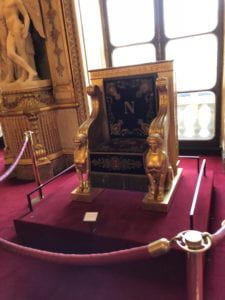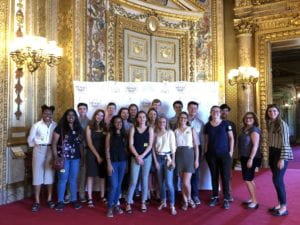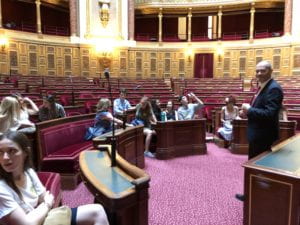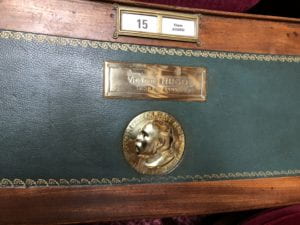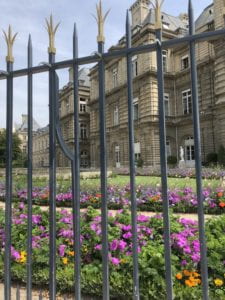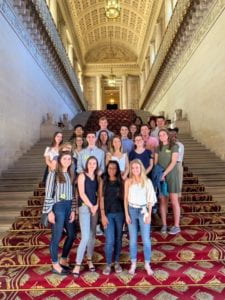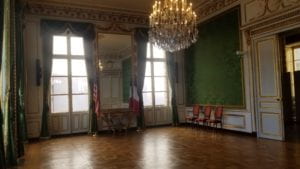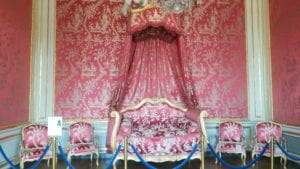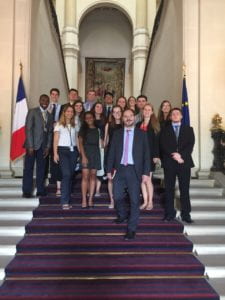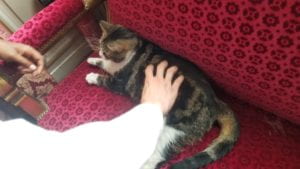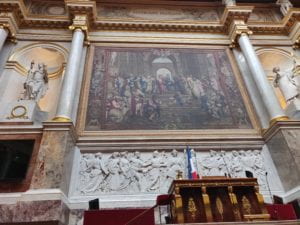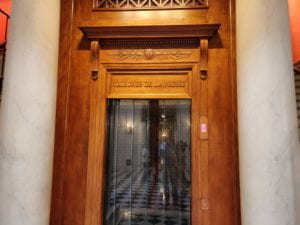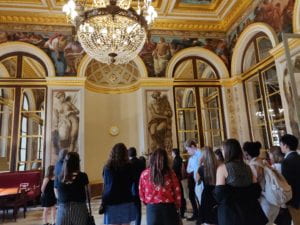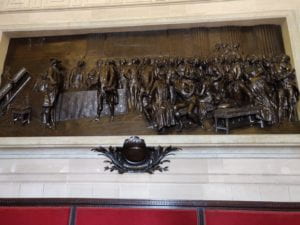Hello everyone, my name is Cole. Recently, our EU Study Abroad Program had the amazing opportunity to travel to the Palace of Versailles. However, we were not on any normal visit to the chateau; we were attending the symposium to commemorate the 100-year anniversary of the signing of the Treaty of Versailles. Attending this event was absolutely one of the highlights of our program, and we were extraordinarily grateful to be invited.
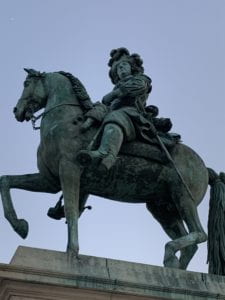
While traveling from Brussels the day before the symposium, we made a quick stop in the French town of Compiègne. This city is home to the Armistice Memorial, which is what brought an end to the conflict on the western front during World War I. In 1918, on the eleventh hour, of the eleventh day, of the eleventh month, members from both sides of the conflict convened in a railcar, and agreed to halt the hostilities. However, it would be approximately seven months before the Treaty of Versailles actually was signed. Unfortunately, the original railcar was destroyed during the second world war, but an exact replica exists in its place.
Later that day we reached Versailles. This was my first time at the palace, and I was awestruck at the magnitude and ornateness of the entire building. It was clear that tourists had traveled from all across the world to see the structure. We had the afternoon to explore the chateau and surrounding areas. Walking from room to room, it is hard to take in the extreme historical significance of the location, especially considering how many world-changing events took place there. From the absolute monarchs such as Louis XIV, the siege from the mobs during the French Revolution, the crowning of the German Emperor, and the signing of the Treaty of Versailles, this space was the backdrop of world history. After touring the palace and the gardens, we ate a much appreciated three course meal to end of our day.
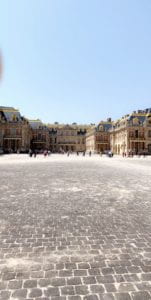
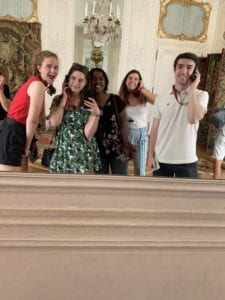
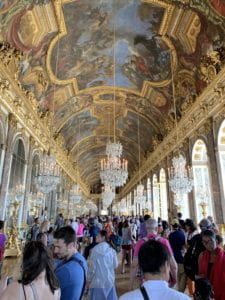
The next morning on the 100-year anniversary, we changed into our formalwear, and prepared for the symposium. While this event is not a celebration of the Treaty of Versailles, it is a commemoration of the long-lasting effects and new world order the treaty created. The first speaker we heard from was Monique Seefried, who we had met a few months earlier in Atlanta. She was there to welcome us all to Versailles and to explain the significance of the event. Prior to leaving Brussels, our program read “The Treaty of Versailles: A Very Short Introduction” which was a not-so-short book detailing the politics surrounding the treaty. This was a great way to prepare for our day, and we got to hear from the author himself, Dr. Michael Neiberg.
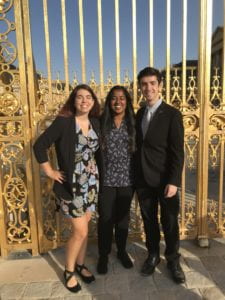
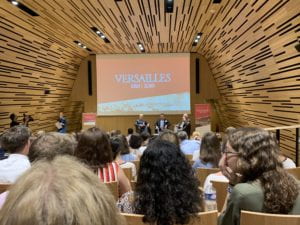
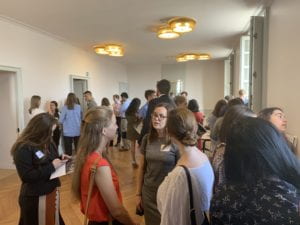
While we were at the symposium, some students had the opportunity to ask questions to the speakers. One of our program participants, Ellie Wagnerin, asked about the American view of being a world power. One hundred years ago, the United States was still very concerned about being an isolationist nation. Congress blocked our participation in the League of Nations, and we refrained from joining most multilateral organizations. Today however, the United States is the clear global leader, but it is interesting that some of the isolationist trends are reemerging. After the first half of the day, we grabbed our picnic bags and went out to the gardens to eat lunch.
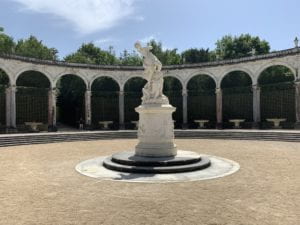
For the rest of the day, we had speakers that discussed American Humanitarian aid and Philanthropy during the first World War. I found this particularly interesting as it is a large part of history that is seldom talked about. Both of our speakers on these subjects gave amazing presentations on the significance of American participation during the war, and how these actions still affect the world today.
After the conclusion of the symposium, our program travelled over to the Pershing-Lafayette Monument on the outskirts of the city. This monument was built to represent the long lasting friendship between France and the United States. Lafayette was known as one of the most important generals during the American Revolution as without his help, the United States would likely have not achieved independence. French aid was crucial to American victory, and we own Lafayette a great deal of gratitude. It was not until World War I, when General Pershing led an army to Europe to help save France, was this debt finally repaid. Although these two men lived hundreds of years apart from each other, they are an excellent example of the strong Franco-American alliance, which has existed throughout our entire history.
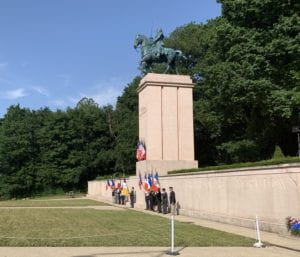
Before the festivities began here, a news outlet covering the event asked if any students would be interested in answering a few questions on French news. Some of our best French speaking students, Grace Fanson and Jack Sheldon, were asked about their time here in France, and how they felt the alliance is still strong today.
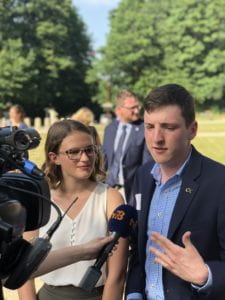
At the monument, there was a ceremony celebrating the steadfast alliance. Important individuals, including the Mayor of Versailles, spoke on the importance of this relationship, and it’s role in the modern world. A wreath was laid at the base of both statues of Lafayette and Pershing. Two of our students, Hannah Kitzmiller and Kyle Smith, were chosen to lay the wreath at the base of Lafayette. This event concluded with the playing of The Star Spangled banner and La Marseillaise.
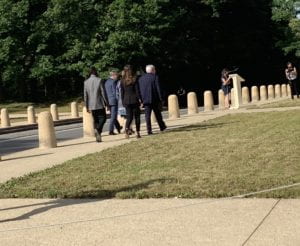
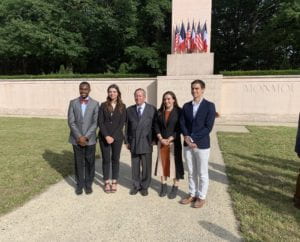
While we may have had a long day, it wasn’t quite over yet. In fact, we were in for a huge surprise at our next location. After the ceremony, we then traveled to the old building of foreign affairs from the time of the French monarchy. After the Revolution, this location had been converted into a library, and now holds a large collection of extremely old and valuable books. While this alone is fascinating, one of the guides said he had a book that would be very important to us. He returned with an original typed copy of the United States Constitution that was sent to King Louis XVI in 1789. To have such an important document sitting only a few feet from us was an awesome experience, one that we felt we could not get even in the United States.
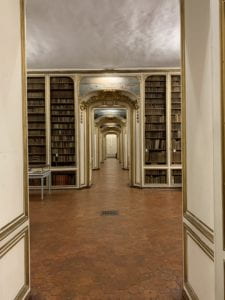
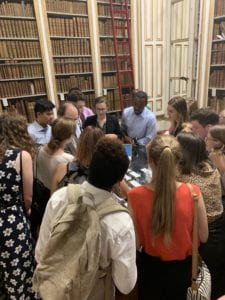
After some light refreshments, we were made aware that there was a piano in the library. Our program director, Dr. Birchfield, was recently joined by her husband who we all call Steve. Steve has a career in music, and likes to put on a small concert once every year for the summer program. We gathered into one room for the performance of some excellent blues music. The last song played was Georgia on My Mind. If we weren’t missing home a little already, we certainly are now.
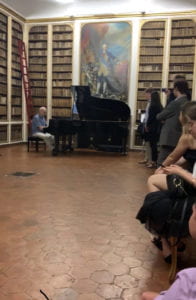
After such an epic day, we finally made it back to the hotel. There we all ate pizza together and watched the United States Women’s Soccer Team be victorious and advance to the semifinals. We were all very appreciative of the historic events we witnessed earlier that day.
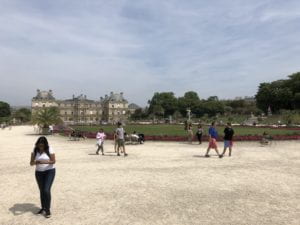
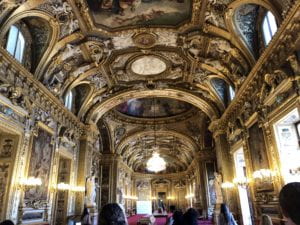 des Conférences was commissioned during the second Empire and thus holds mainly that stye but it also includes Napoleon’s Throne which was used both by Napoleon and Napoleon III.
des Conférences was commissioned during the second Empire and thus holds mainly that stye but it also includes Napoleon’s Throne which was used both by Napoleon and Napoleon III. 